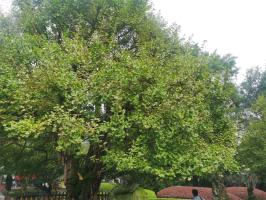How Much Does Planting Trees Help the Environment?
Deforestation is a major environmental problem, and planting trees has been touted as a way to help counteract its effects. But how much of a difference does planting trees actually make?
The Benefits of Planting Trees
Planting trees can have a range of benefits for the environment. Trees absorb carbon dioxide from the atmosphere, helping to mitigate climate change, while also producing oxygen. They also help to regulate the water cycle, reducing the risk of flooding and erosion. Trees provide habitats for a range of wildlife and are an important part of many ecosystems. Planting trees can also improve air quality by reducing pollution and dust.
The Global Impact
The global impact of planting trees can be significant, particularly when large numbers of trees are planted. One study estimates that global reforestation could sequester an additional 2.2 billion tons of carbon dioxide per year, which would represent a substantial reduction in greenhouse gas emissions. Other estimates suggest that reforestation could absorb up to one-third of the carbon dioxide that humans have emitted since the start of the Industrial Revolution.
Local Benefits
Planting trees can also have a range of local benefits. In urban areas, trees can help to reduce heat island effects, providing shade and cooling. They can also help to reduce noise pollution and improve the overall aesthetic of an area. In rural areas, trees can provide food, fuel, and materials for construction, while also helping to reduce erosion and improve soil health.
The Importance of Choosing the Right Species
While planting trees can have many benefits, it’s important to choose the right species for the local environment. The wrong tree species can be invasive or not well-suited to the local climate, which can cause more harm than good. In some cases, planting trees can even contribute to deforestation when non-native species are planted in place of native trees.
The Limitations of Planting Trees
Planting trees is an important part of mitigating the effects of deforestation and climate change, but it’s not a magic bullet. Trees need time to grow before they can start to provide the full range of benefits, and there are limits to how much carbon dioxide they can absorb. Planting trees is also not a substitute for reducing greenhouse gas emissions through other means.
Conclusion
In conclusion, planting trees can have a range of benefits for the environment, both globally and locally. It’s an important tool for addressing deforestation and mitigating the impacts of climate change. However, it’s not a silver bullet, and care must be taken to choose the right species and to not view planting trees as a substitute for other measures to reduce greenhouse gas emissions.

 how many times do yo...
how many times do yo... how many planted tre...
how many planted tre... how many pine trees ...
how many pine trees ... how many pecan trees...
how many pecan trees... how many plants comp...
how many plants comp... how many plants can ...
how many plants can ... how many plants and ...
how many plants and ... how many pepper plan...
how many pepper plan...






























